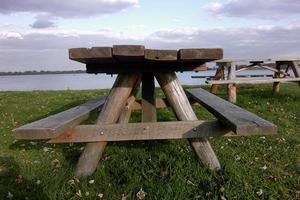With the fun-filled days of summer, comes a danger not many of us do not usually think about – heat stroke. Our bodies are constantly generating heat and being in warm environments and working in heat can put a great deal of stress on our internal cooling systems. Heat stroke is life threatening, because when it occurs we lose our bodies’ normal cooling mechanisms such as sweating and perspiration evaporation. With the loss of these preventative mechanisms, the body’s core temperature can rise to 104 and higher.
Internal damage which occurs when the body’s temperature is over 105 degrees usually cannot be undone. It is like trying to un-fry an egg.
The most common cause of heat stroke is over exertion in warm and humid temperatures. However, there are factors which can make people more prone to experiencing heat stroke. People who are more susceptible may include: the obese, athletes, outdoor workers, infants and the elderly. Also, people who have been diagnosed with heart diseases, lung diseases and kidney diseases may be more vulnerable in hot weather because of the medications they take for these conditions.
The signs and symptoms of heat stroke can be difficult to spot because they mimic the symptoms of other disorders, such as heart attacks. Before experiencing heat stroke, a person may show signs of heat exhaustion. Signs of heat exhaustion may include: nausea, muscle cramps, headache, listlessness, dizziness/lightheadedness, and exhaustion. If a person begins to display any of these symptoms, people should be on the alert for progression to heat stroke.
Not all people will show signs of heat exhaustion before experiencing heat stroke. People may show some of the symptoms, a combination of symptoms or only a few symptoms of heat stroke. Heat stroke may have a sudden onset or come upon a person slowly. The most common symptoms include one or more of the following: strange behavior, high body temperature, skin which is hot and dry to the touch (although it may be moist in cases of exertion), rapid heartbeat, hallucinations, fainting, trouble breathing, lack of sweating, agitation, confusion, seizures and eventually a coma.
People experiencing heat stroke need help immediately to avoid permanent organ damage and/or failure. Thousands of people die from heat stroke each year. Heat stroke is a life-threatening condition and should be treated as a medical emergency. The first thing that should be done for a heat stroke victim is to cool them off and lower their body temperature. If a person is experiencing heat stroke they should be moved to a shady area. Emergency services (911) should be called immediately. Next, loosen or remove their clothing to allow air to circulate. Then cool or tepid water should be applied to the entire body. (Avoid using ice cold water as this may be a shock to the victim’s system.)
As you wait for help to arrive, fanning the victim can promote sweating and then evaporation. This will help cool the body down. If possible, monitor the victim’s temperature and continue cooling efforts until the body’s temperature drops to 101 degrees.
To avoid experiencing heat stroke, make sure you drink plenty of water while being out in the heat. Try to avoid drinking alcohol, coffee, tea or other caffeinated beverages, while being active in hot and humid weather, as they dehydrate the body. If you are going to be out in hot humid weather, plan to take frequents breaks and rest in cool shaded areas. Wearing light colored, loose fitting clothing can allow air to circulate around the body and keep you cool. Hats will also keep heat stroke at bay.



